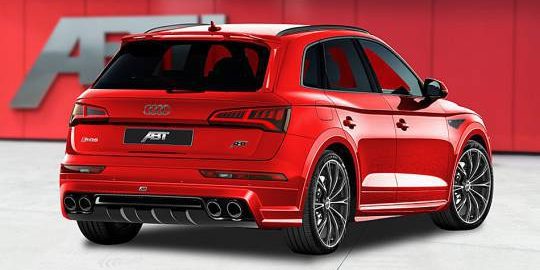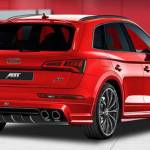Audi has revealed a new diesel variant of its second-generation SQ5 ahead of a planned public premiere for the mid-sized SUV at the 2019 Geneva motor show in early March.–From others Editors
- Audi’s turbocharged
The new TDI is planned to go on sale in key global markets, including Australia, later this year. It debuts a newly-developed diesel-electric mild hybrid drivetrain that uses a number of engineering solutions, including an electric-powered compressor (EPC), already featured on the German car maker’s larger SQ7.
The new driveline is based around the latest variant of Audi’s turbocharged 3.0-litre V6 diesel engine, which is coupled with a 48-volt electrical system that forms part of a raft of new mild hybrid functions. It is used to power a small 7kW electric motor, which in turn operates the electric compressor.
Mounted downstream of the conventional exhaust gas driven variable vane turbocharger, the compressor is designed to boost induction for a reduction in typical turbocharger lag and added low-end performance at engine speeds of up to 1650rpm. Alone, it is claimed to be capable of producing up to 1.4bar of pressure, compared to the 2.4bar of the conventional exhaust gas turbochargers.
With 255kW and 700Nm of torque, the new driveline delivers 5kW more and the same amount of torque as earlier first-generation SQ5 TDI Plus, which did without the new mild hybrid functions of its successor
By comparison, the existing second-generation turbocharged 3.0-litre V6 petrol engine powered SQ5 boasts 260kW and 500Nm of torque.
Audi quotes a 0-100km/h time and top speed for the four-wheel drive SQ5 TDI of 5.1sec and 250km/h respectively.
The mild hybrid system featured in the new SQ5 TDI includes a belt driven alternator starter motor (BAS) connected to the crankshaft. During braking, it is claimed to be capable of recuperating up to 12kW of kinetic energy, which is stored in a lithium-ion battery mounted within the floor of the rear luggage compartment.
The inclusion of a belt driven alternator start motor also provides the SQ5 TDI with a coast mode function. It shuts down the engine on short periods of trailing throttle for added fuel savings. Overall consumption is put at 6.6L/100km on the correlated European NEDC cycle, providing it with average CO2 emissions of 172g/km.
As with its petrol sibling, the SQ5 TDI receives a standard eight-speed torque converter equipped automatic gearbox and four-wheel drive system. It nominally apportions 40 per cent of drive to the front wheels and 60 per cent to the rear, with an ability to send up to 85 per cent of power to the rear wheels. Buyers can specify the new model with a sports differential for the rear axle, bringing a torque vectoring function to vary the amount of drive channelled to each of the individual rear wheels.
Further options for the new Audi include an adaptive air suspension in place of the standard steel spring set-up, which comes with adaptive dampers and a 25mm reduction in ride height over the standard second-generation Q5. There’s also a dynamic steering option with a variable ratio.
The SQ5 TDI is differentiated from standard Q5 models by a series of exterior styling changes, including re-profiled bumpers, a brushed aluminium grille featuring a honeycombed patterned insert, and a rear diffuser. The Standard wheels are 20-inch in diameter, with 21-inch items available as an option in combination with red brake callipers.
Inside, it adopts sports seats upholstered in Alcantara and leather and a leather-bound multi-function steering wheel together with an S-themed 12.3-inch virtual cockpit instrument display and new aluminium trim elements. Among the interior options is a Bang & Olufsen stereo and Audi’s latest connectivity system, which includes a wireless smartphone charging tray.








